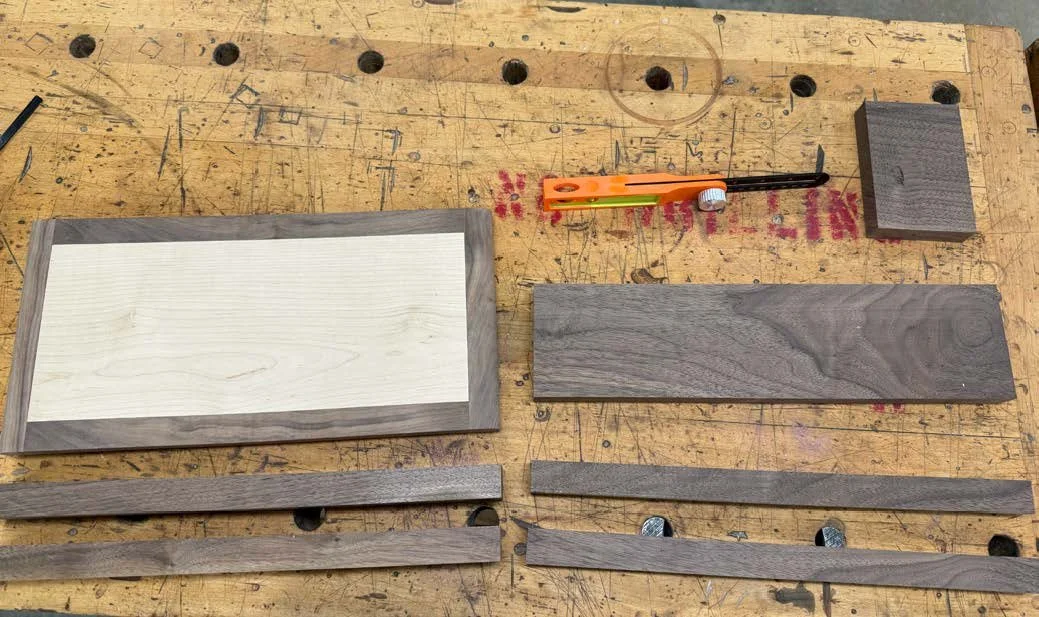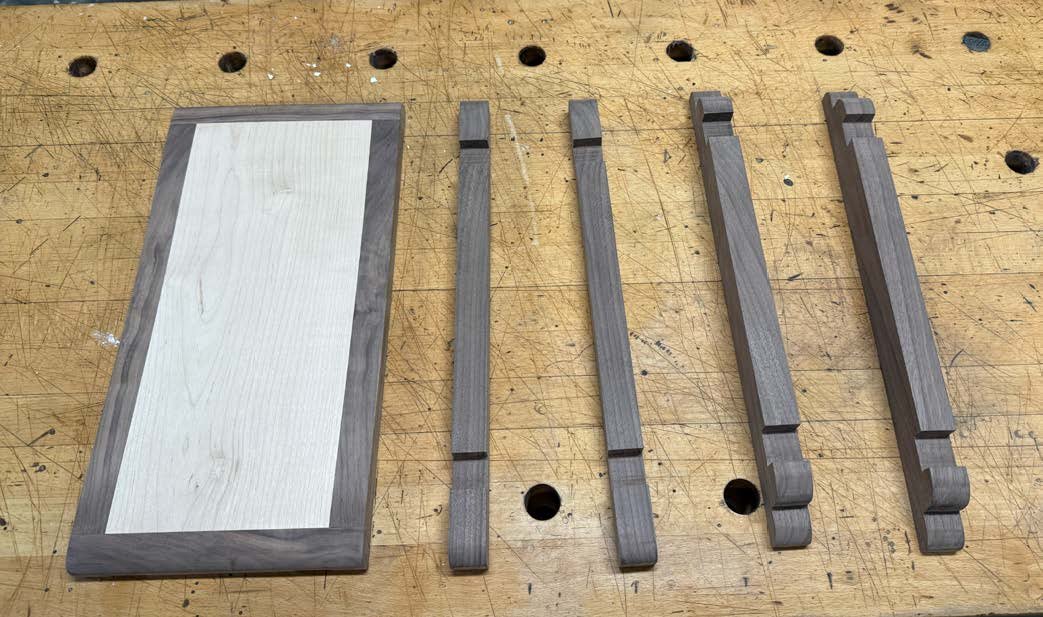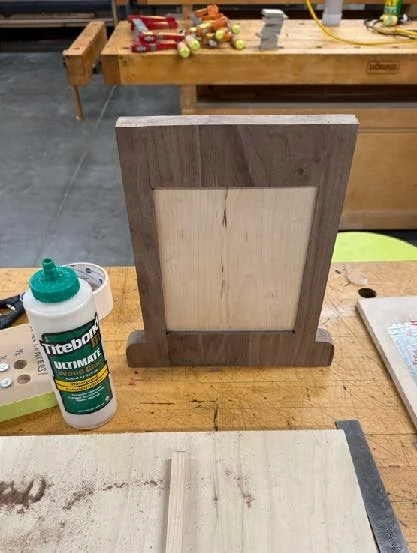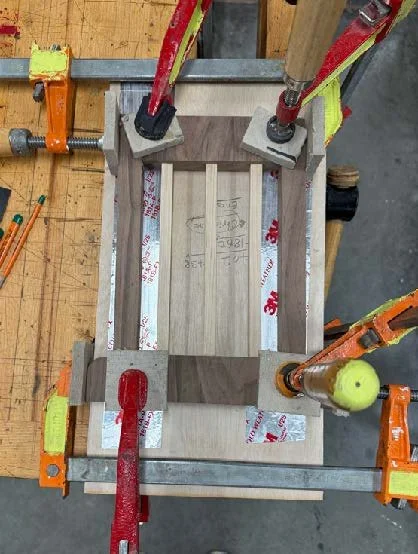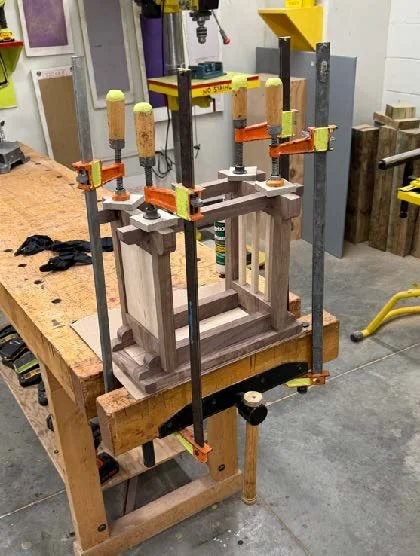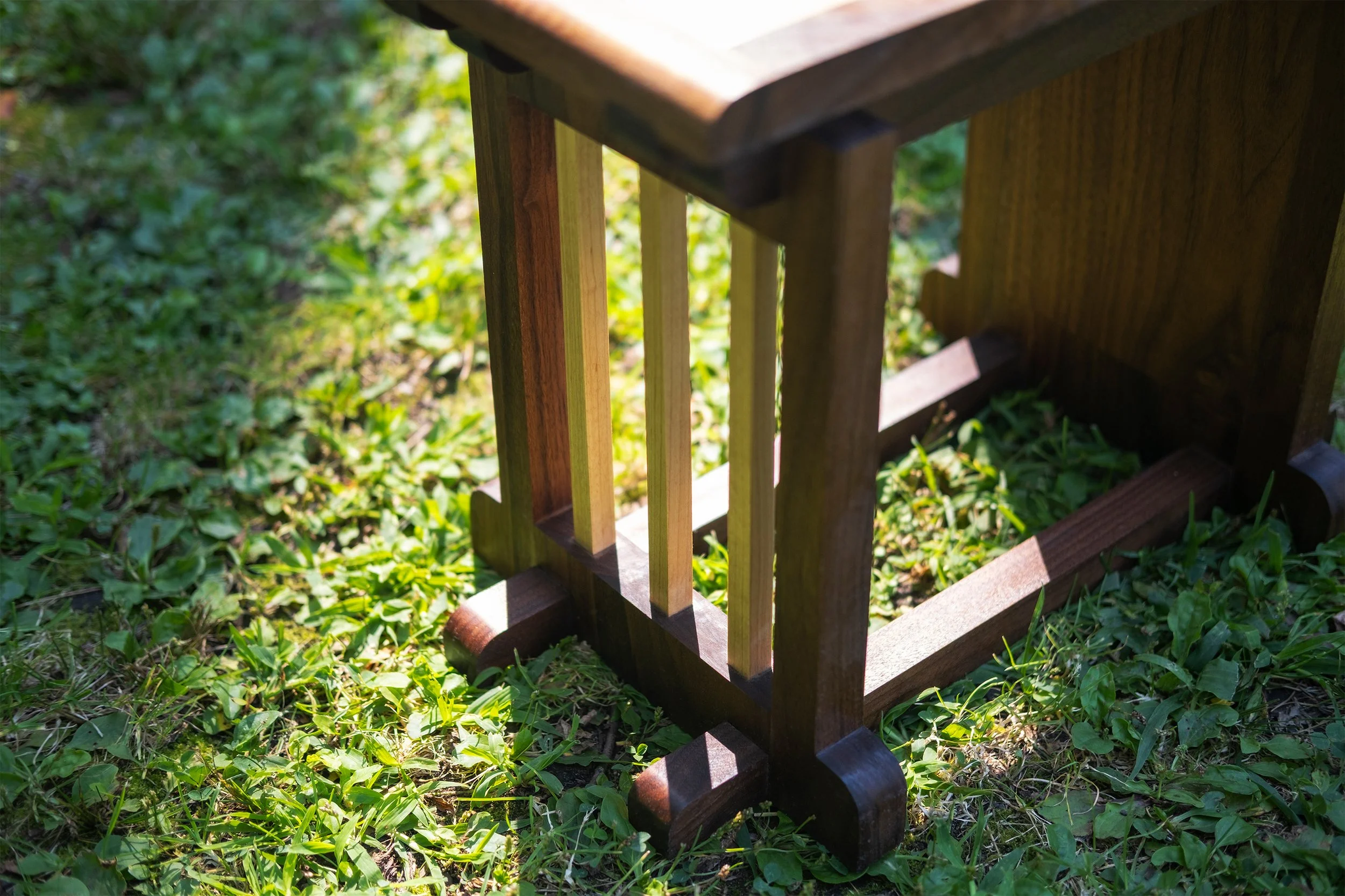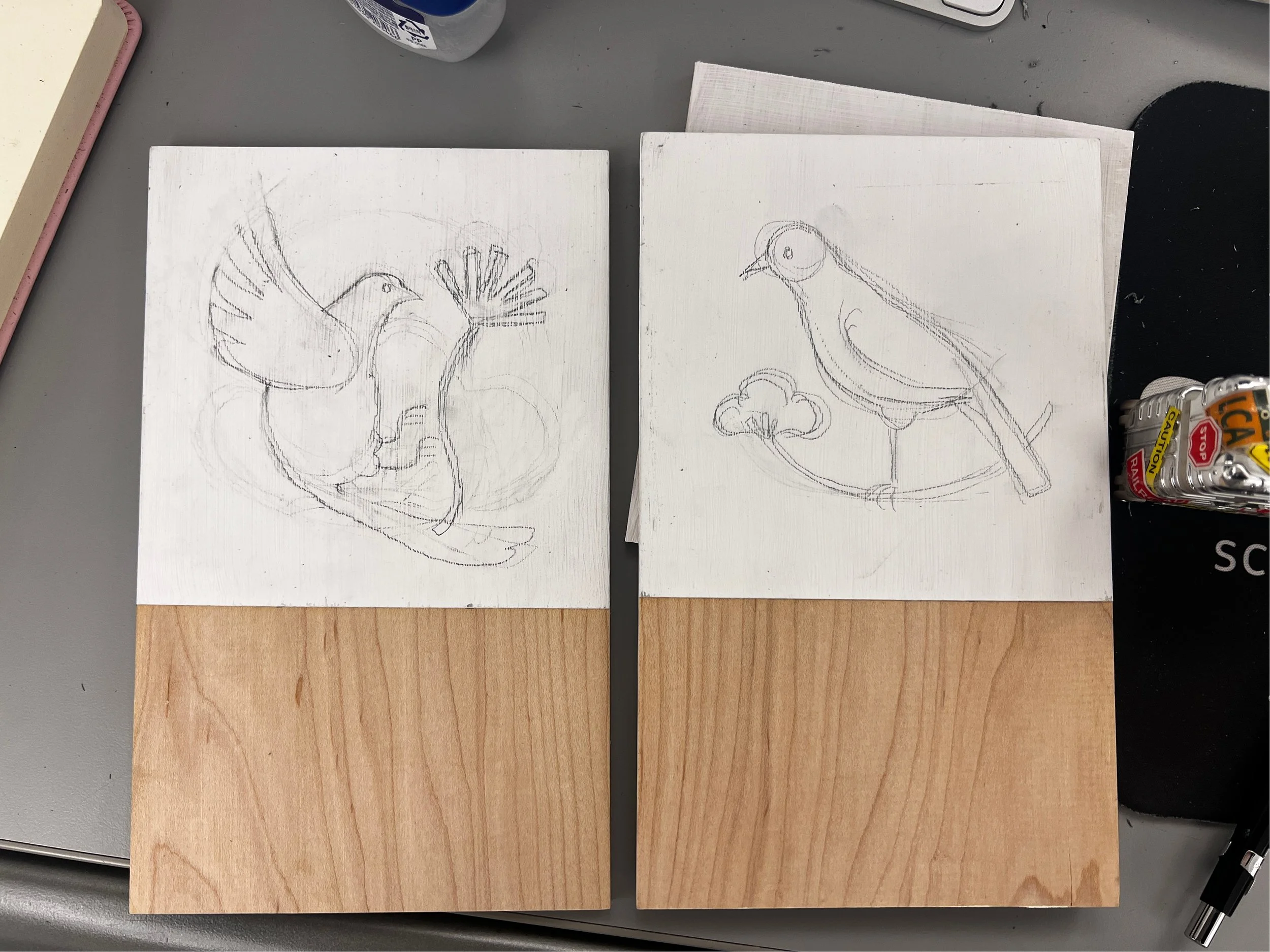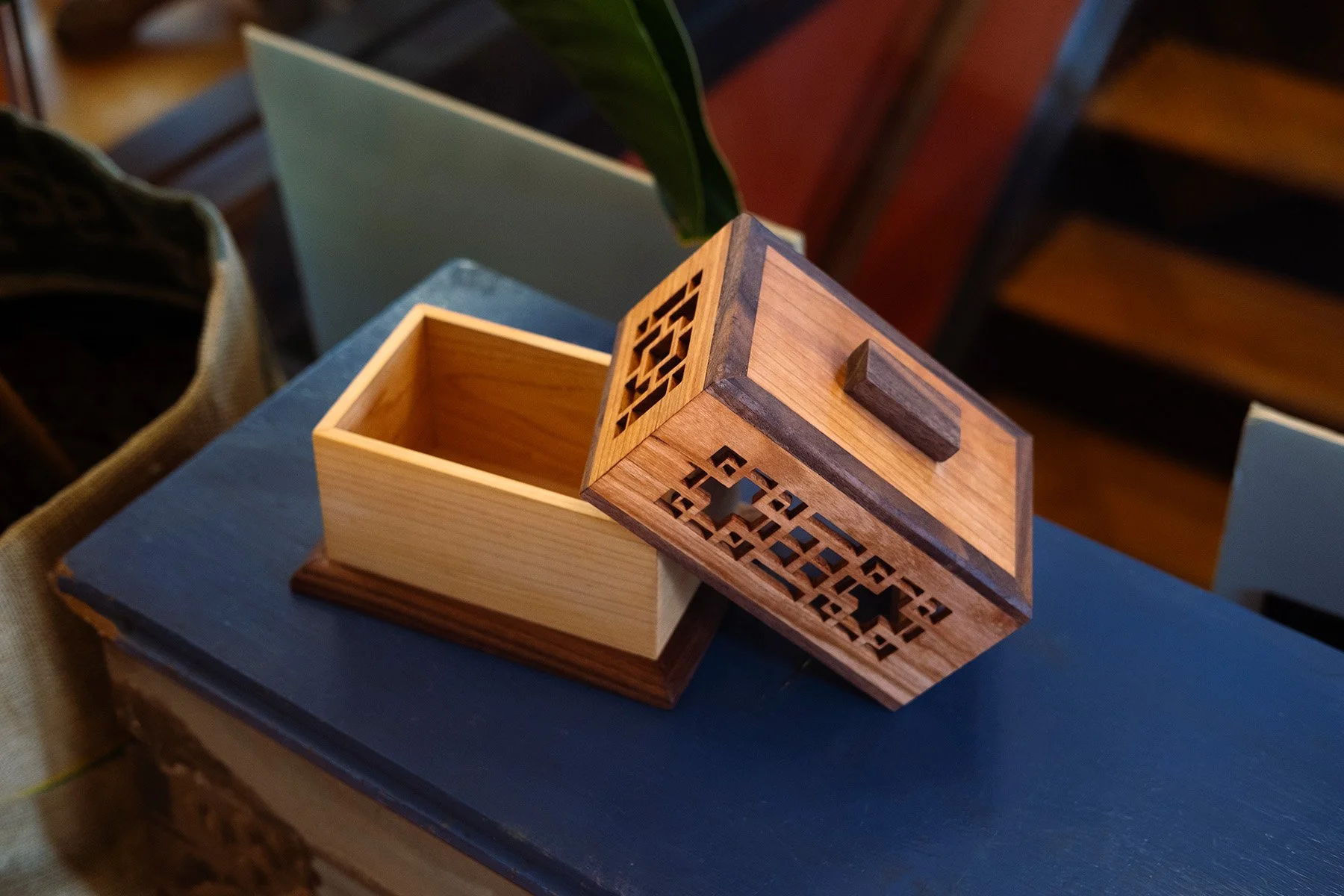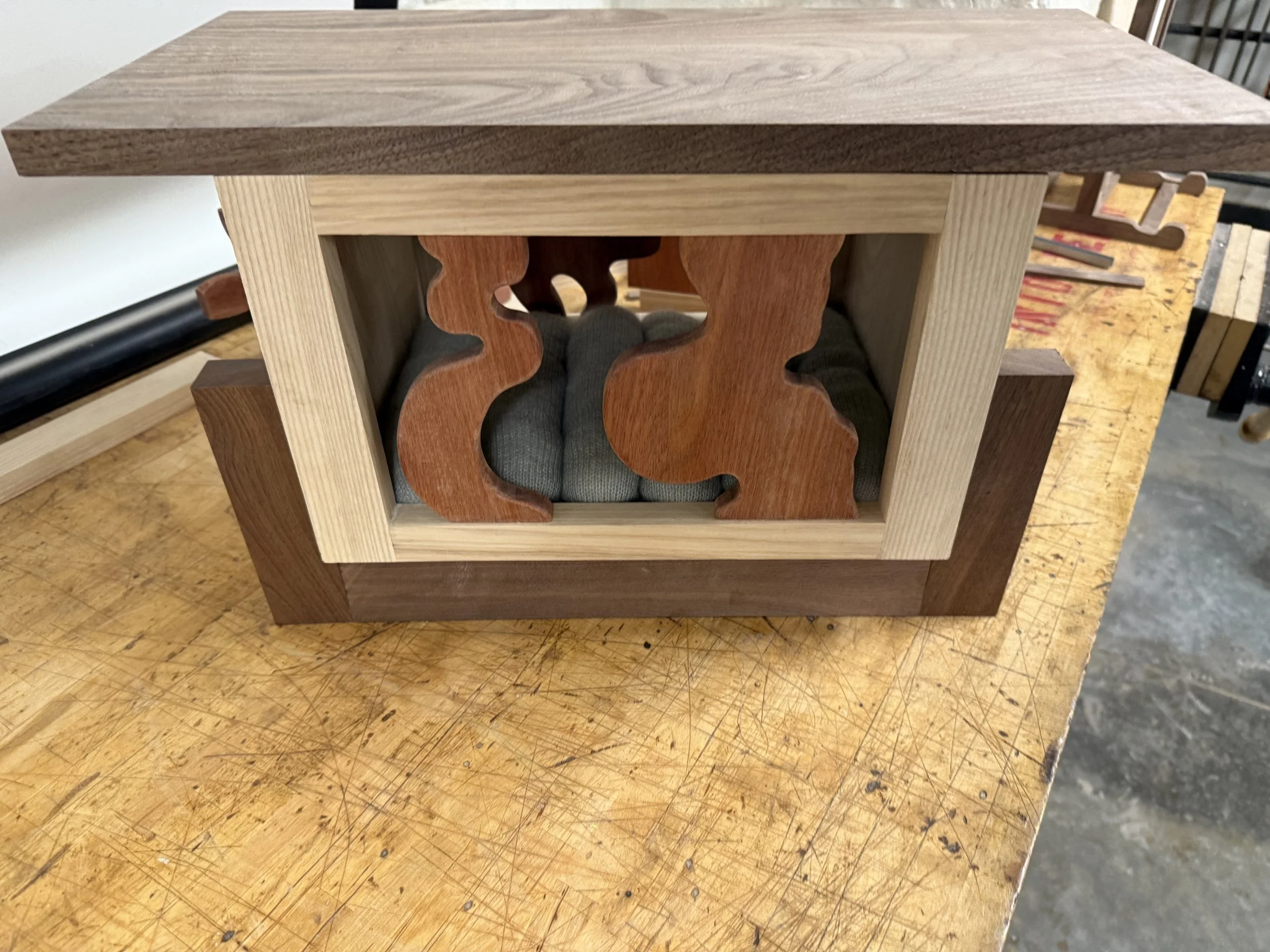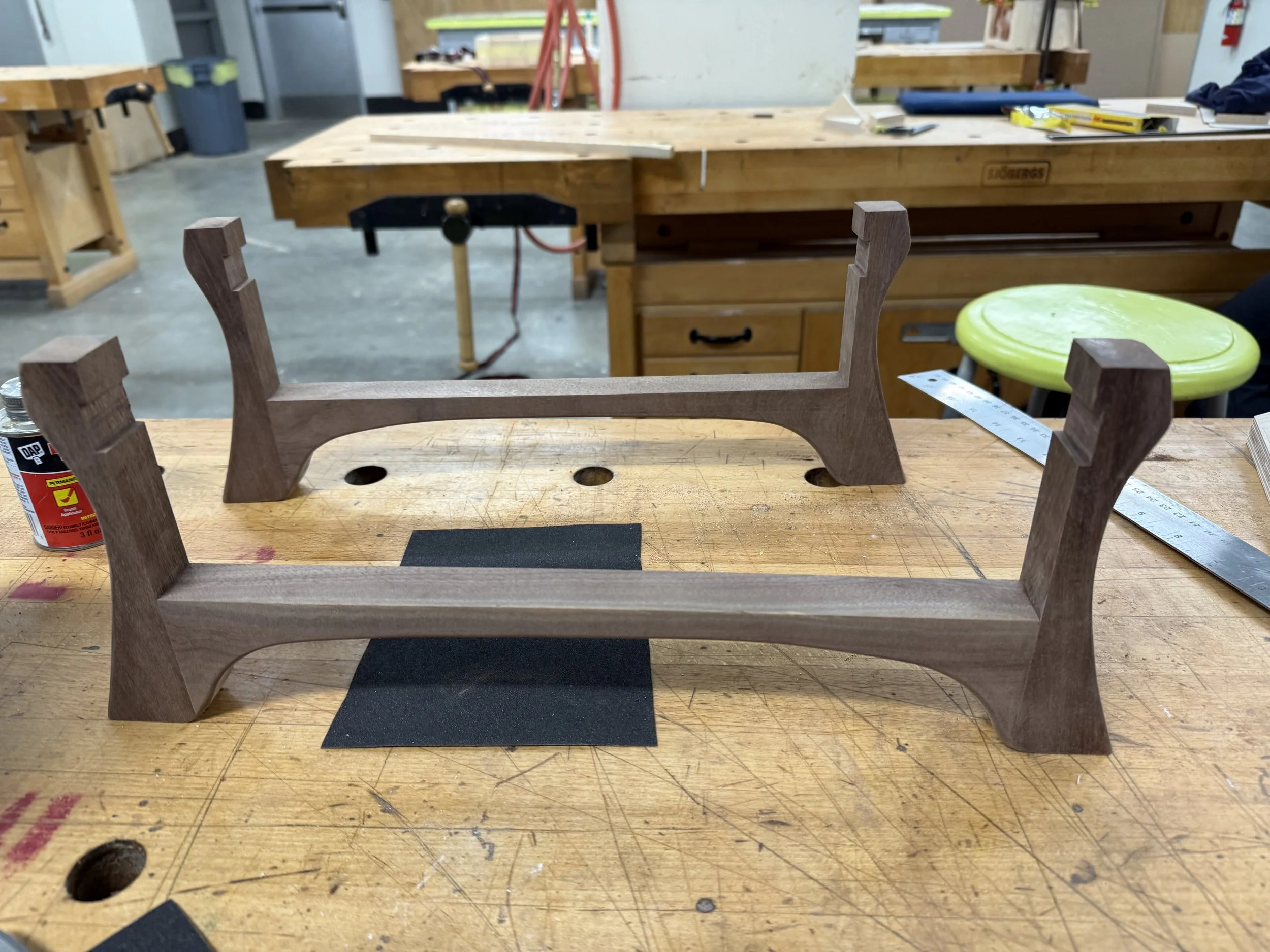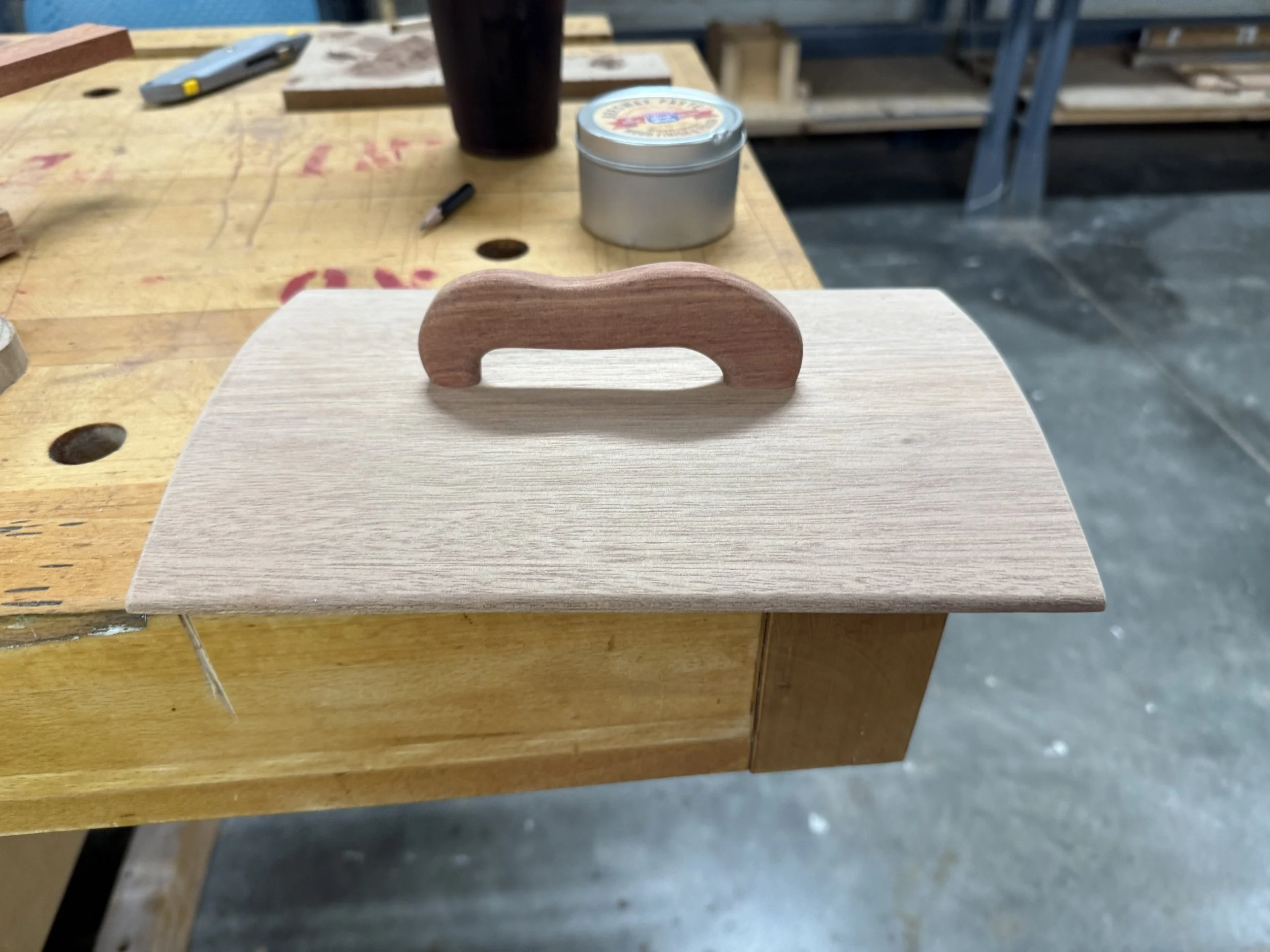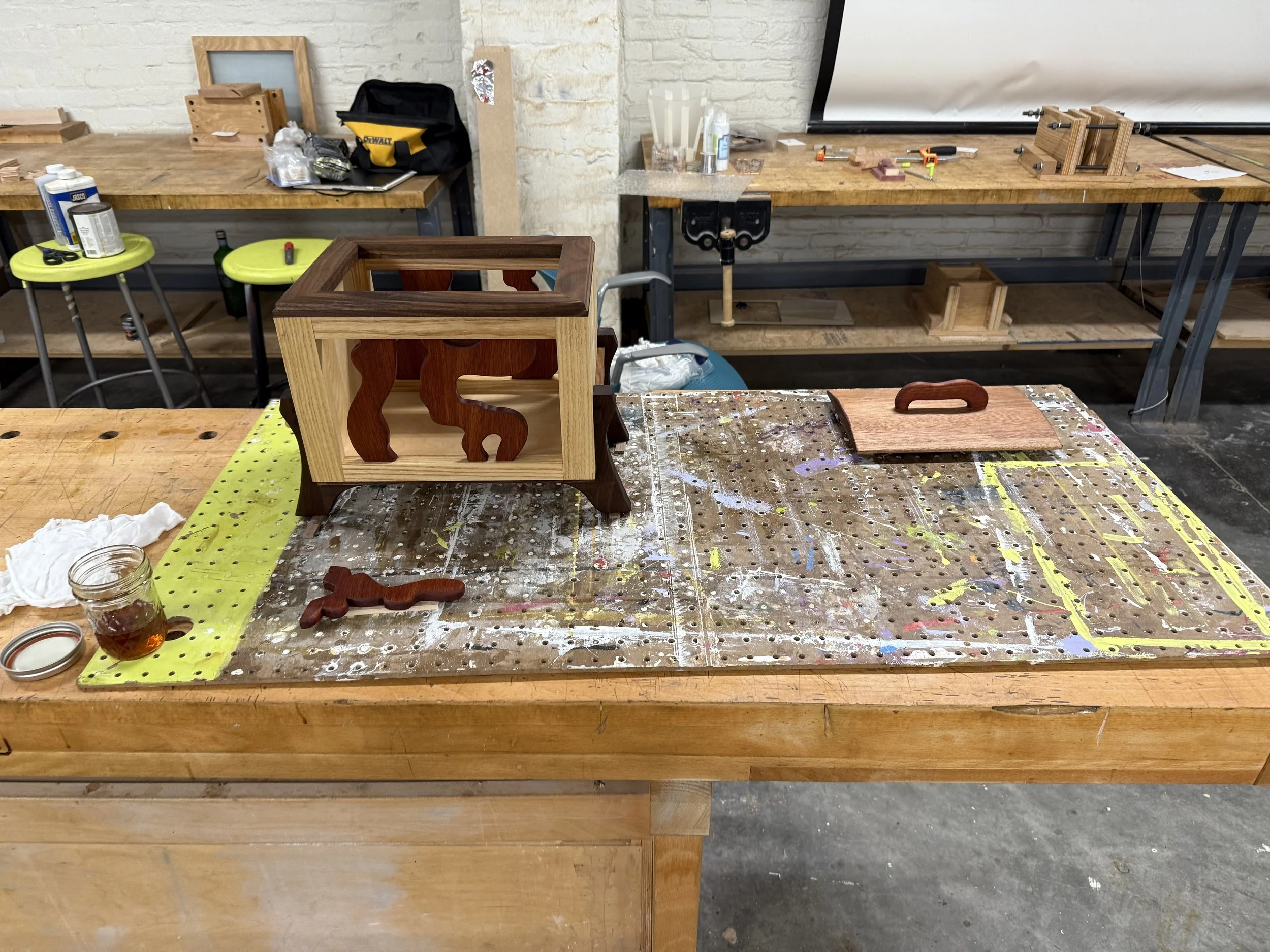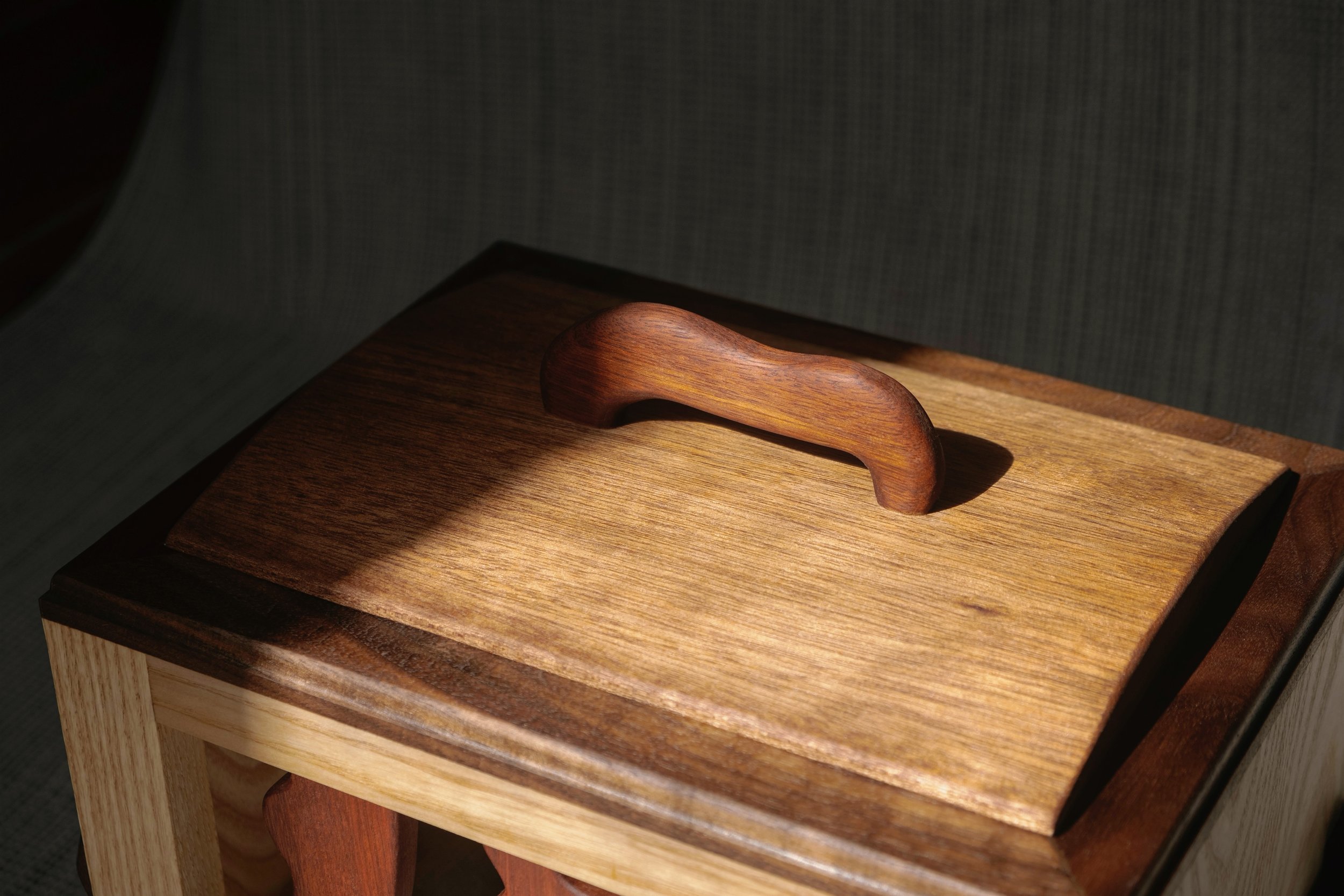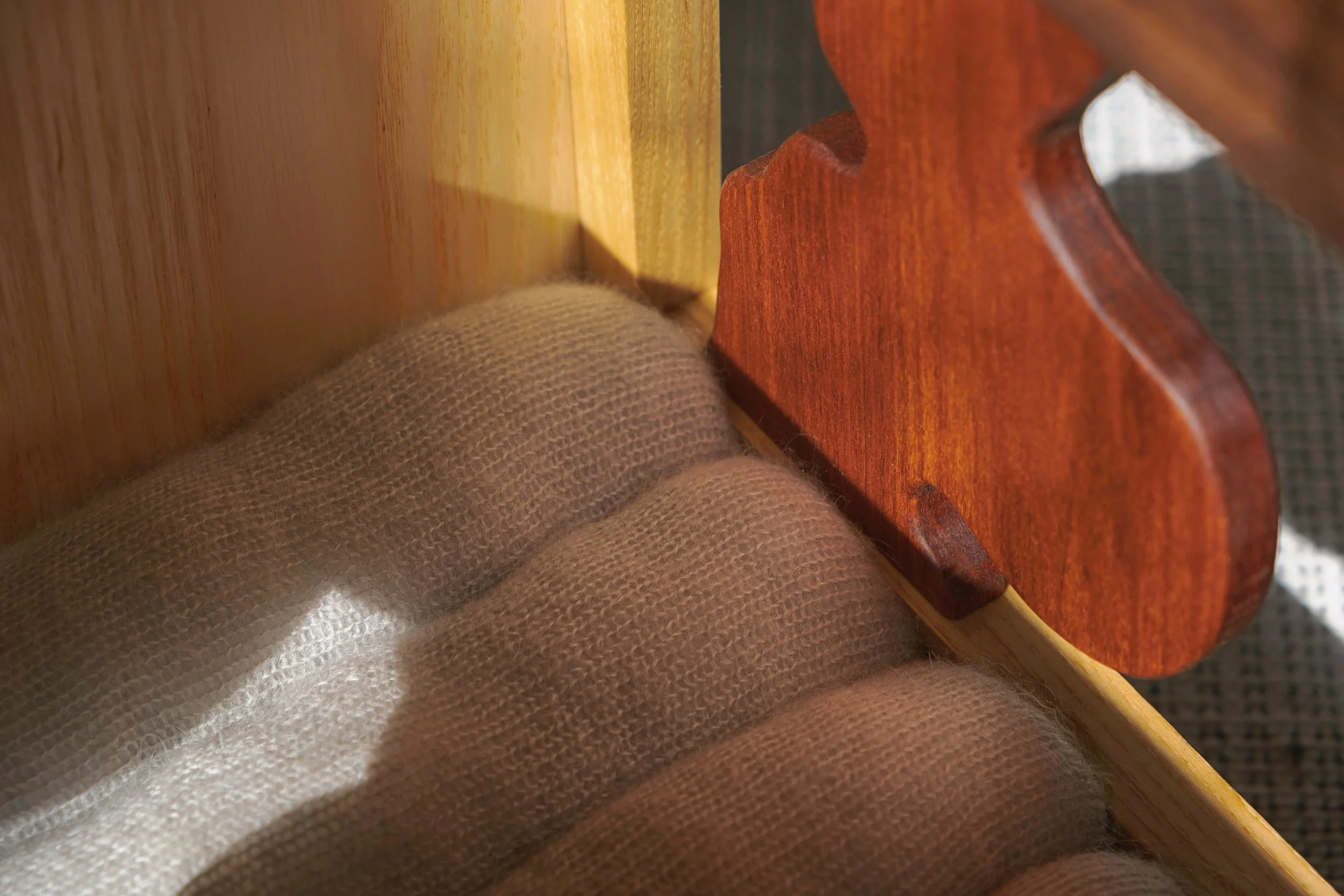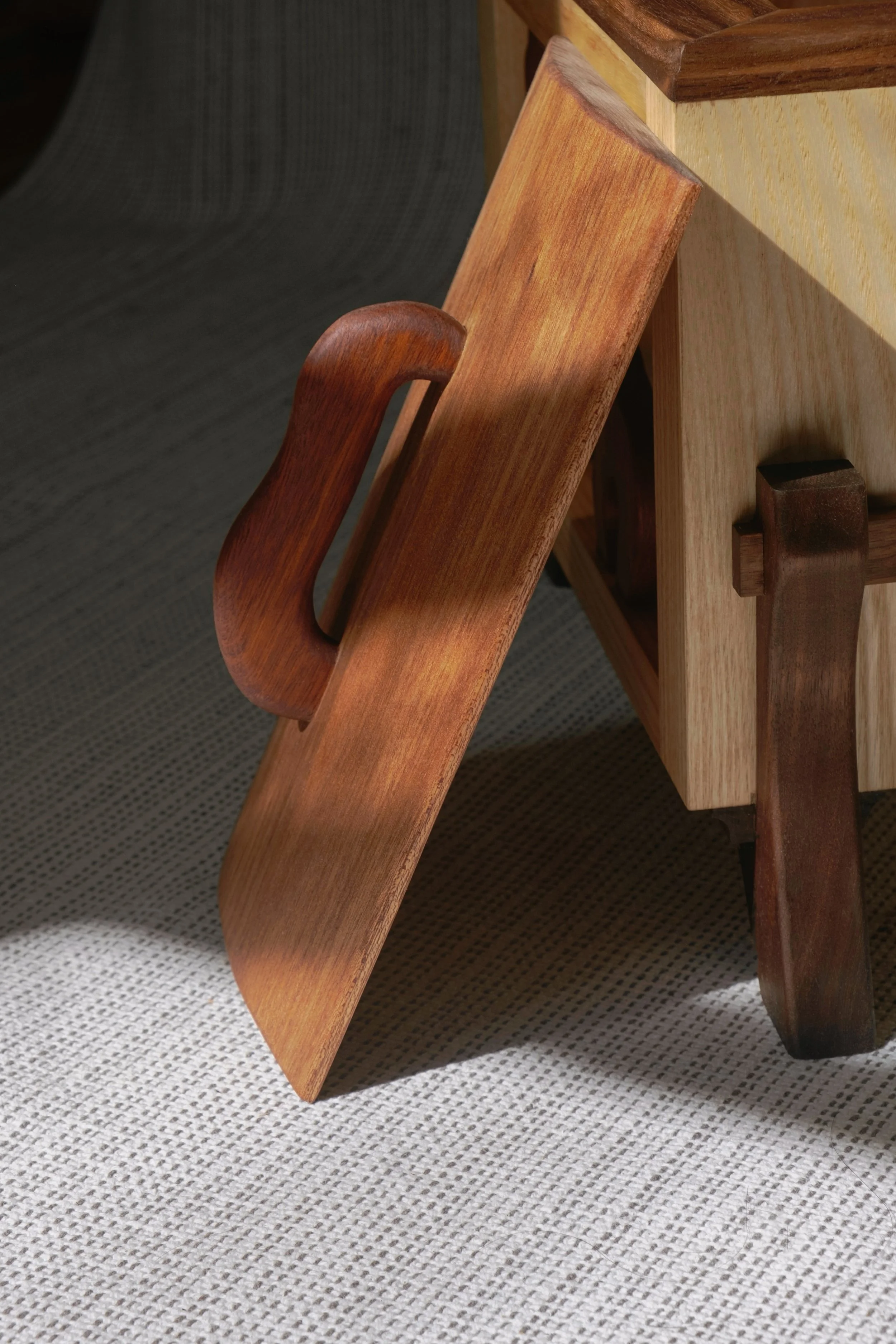SERIES 001
2025
* SERIES 1* was a series of projects that drew inspiration from the form of everyday objects. Rather than emphasizing function or practicality, these body of works attempts to reinterpret the form through a visual lens, transforming them into contemplative objects.
01. HANDCRAFTED BRACKETRY
Walnut, Maple
Found in traditional wooden architecture across Korea, China, and Japan, the gongpo(as known in Korea) serves both functional and aesthetic purposes. Structurally, the bracket system distributes the weight of the building to ensure its structural durability. At the same time, it is often see as the most decorative and expressive element of the building, defining the aesthetic characteristic of the building through its often intricate design.
The model represented a simplified layer of brackets placed on a castle joint.
02. STOOL
Walnut, Maple
The Wooden Stool revisits traditional aesthetics explored in the Untitled project, such as the subtle curvature of the top panel, inspired by the eaves of the roof in Korean architecture. The asymmetrical side profiles, along with the overall boxy form, explore the notions of presence and absence of space throughout the furniture.
IDEATION
Initial Sketch & Design on Illustrator
Final 3D Design on Fusion
FABRICATION
IMAGES
03. SCREEN (TIGER AND THE MAGPIE)
Walnut, Maple
This work was done in collaboration with Ji Young Kim.
The Magpie and the Tiger are recurring motifs in Korean Folk Art, often presented together as Hojakdo(虎鵲圖). These paintings often have dual meanings: as satirical commentaries on social hierarchies and other injustices, or as auspicious symbols meant to ward off evil spirits.
Inspired by the form, though not the scale, of traditional folding screens, this piece puts the Hojakdo at a size allowing it to bring good luck to everyday spaces.
SKETCH
All sketches and the final illustration were drawn by Ji Young Kim.
FABRICATION
IMAGES
04. JEWELRY BOX
Walnut, Maple, Cherry
The jewelry box was inspired by the simple geometric patterns found in munsal, or lattice frames traditionally used in Korean doors and windows. While the patterns may not primarily be functional, they add a modest yet decorative element to the minimalistic design of the box. The interior and exterior of the box's sides were made from White Maple and Cherry wood, where the natural contrast of the two woods accentuates the pattern when the lid is placed.
05. CRATE
Ash, Walnut, Cedar, Bloodwood, Fabric
This work was done in collaboration with Yutong Li who designed and made the fabric.
The final piece for the series and the most representative of the concept, the piece is meant to explore the interplay of presence and absence, using space as a design element throughout the piece. The design of the chest takes inspiration from features found in traditional Korean woodworking and architecture.
FABRICATION
IMAGES
ACKNOWLEDGMENTS
Special thanks to Tucker Houlihan, without whose support I would never have had the opportunity to work on this project.
Thanks to Stephen Cooke for his technical guidance and moral support.
Thanks to Yoka Gong, who took all the photos and videos for this series.









